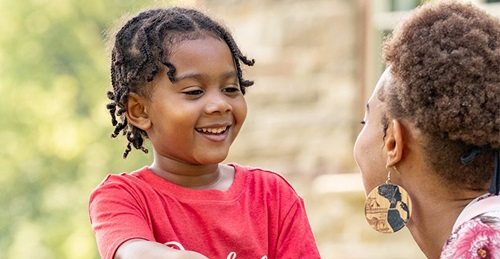Cultural diversity in the early years
| June 2012Young children in the UK are being raised in a society with many sources of cultural diversity. Good early years practice needs to support equality from the earliest months of babyhood. But what does this mean as practitioners work to create a positive learning environment? In what ways should your early years setting reflect a range of sources for cultural identity? Play materials, books and other resources can be offered in a constructive way by reflecting on how young children learn about culture and cultural identity.
- Shared culture is communicated through the events of daily life, such as food, ways of dress and familiar music or art forms.
- A sense of personal identity through culture is supported by shared language and ways of communicating and sometimes through a shared faith or religious backdrop to daily life.
- Young children of every cultural or ethnic background need to develop a secure and positive sense of their own identity. Children’s family life will be the most significant source of that identity. Nursery or playgroup life should reinforce it.
- On a firm basis of ‘my own culture’, children are then able to make sense and learn about information highlighting less familiar cultures. Experiences outside the family, including within early years settings, can be a significant source of this broader base of understanding.
- So long as practitioners offer experiences in a thoughtful and well-informed way, there is a good chance that children will learn respect for ways of life with which they are less acquainted.
It is vitally important that children can see themselves and their family reflected in play resources, visual images and books. Good practice includes reviewing the messages given by all your resources and the experiences you offer. In a steady fashion, you have a responsibility to extend young children’s understanding beyond their own backyard.
- Posters, photographs and other visual images can give the message, even to very young children, that all these people who look different in many ways are part of our nursery and our community. Children see themselves and people who look like their family.
- There are plenty of quality story and information books that reflect the fact that the UK is a culturally diverse society. You may not necessarily find a good array in high street shops; try Tamarind Books or www.letterboxlibrary.com
- Children benefit from stories with characters who look like them. Children can feel excluded if ‘people like me’ only appear in books about ‘children from other lands’.
- It is just as important that books present children who look different as characters getting on with life – not as problems or special issues.
- Good illustrated information books for children approach diversity through shared experiences: ways to welcome a new baby, family celebrations, different games or important transitions like going to school.
There is always some ethnic diversity in a neighbourhood, although large urban areas are likely to have populations with more obvious differences in skin colour, physical appearance and dress. It would be poor practice to restrict play resources in a mainly ‘white’ area on the grounds that ‘nobody round here looks like that, so…’ Nurseries and playgroups extend children’s general knowledge in many directions that cannot be observed locally. You need to acknowledge the cultural diversity that is part of daily life, sometimes only an hour or so away by train or car.
Resources for pretend play can be inclusive in terms of cultural diversity: dolls and small play figures, dressing up clothes or the home corner equipment. All materials should be offered with equal respect, as part of somebody’s normal life. For instance, the words ‘multicultural dressing up clothes’ are used in some catalogues to describe non-European clothing. The phrase could imply that there is ‘normal clothing worn by us’ and ‘exotic outfits worn in other cultures.’
Children welcome experiencing food, music or dance forms that reflect their own family and neighbourhood experiences. Early childhood is a good time to offer opportunities that enable children to stretch beyond the familiar. But again it is important that experiences help children understand that there are different ways to meet basic needs like food and drink. Every culture has some kind of traditional cuisine. Of course, families with English roots should be asked to contribute foods to a multicultural buffet evening, not just families from other countries.
Children can learn to appreciate cultural diversity in styles of art, craft, music and dance. All opportunities need to be well grounded in positive pride for the styles common in every child’s own background. Children are attuned to what is familiar and may take a while to become accustomed to less familiar musical patterns. Supportive practitioners establish a ground rule, much as with food, that it is fine to say you are ‘not keen’, but nobody is rude about music or dance that belongs to other people.
A shaky grasp of child development can lead some practitioners into unbalanced attempts to promote understanding of ‘other cultures’ without sufficient attention to children’s own cultural identity. A key message for equality practice is that there is no rush. Children become confused if early years practitioners feel pressure to rattle through a long list of ‘multicultural activities’, including many celebrations, before children enter formal school. A few quality experiences can start children on the road to appreciating diverse cultures and traditions.
UK early years curriculum frameworks emphasise developing young children’s own sense of identity and a positive sense of pride in their own family origins. Starting with themselves, young children can develop a sense of belonging to the local community and begin to understand and respect less familiar cultures.










